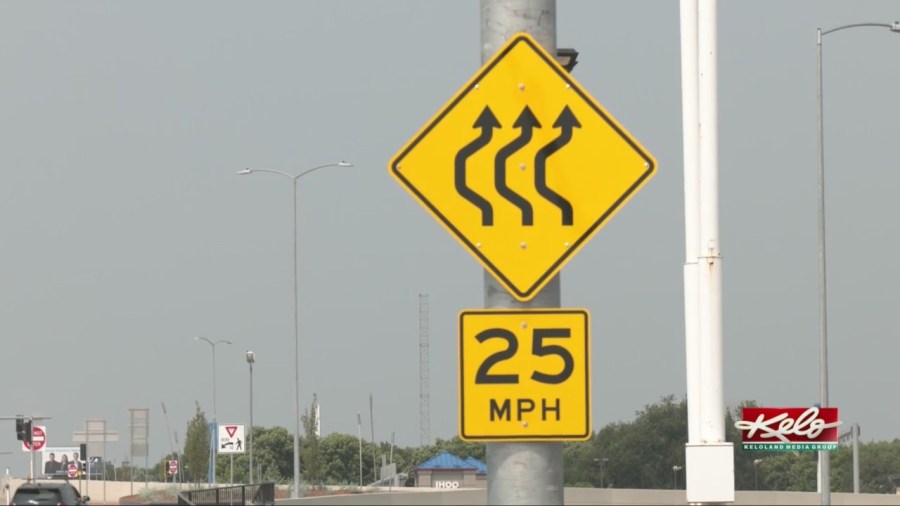SIOUX FALLS, S.D. (KELO) — Roundabouts are all over Europe. Now, we are seeing more of them in KELOLAND. The simple rule is that drivers yield to the vehicles already in the roundabout, and they allow drivers to keep moving through the intersection. Traffic engineers say they reduce severe crashes by 80 percent. The newest addition to traffic management in KELOLAND is the diverging diamond.
Lacrosse Street in Rapid City was the first. The 41st Street diverging diamond in Sioux Falls was the second, and the state has more planned. They are intimidating to some because drivers cross over to the other side of the road. Some people are fans, and some are not convinced.
“I guess we will wait and see. It’s kind of a new thing for people in the area, but I could see maybe a few sideswipes here and there down the road,” said Kiel Johnson.
Tom- “It’s supposed to be safer.”
“We will see, I’d rather be going straight than in a figure S,” said Johnson.
“I like them,” said Jason Borresch, of New London, MN. “It seems to move traffic around pretty good it’s just a learning curve, getting used to it.”
Mike Behm with the Department of Transportation in Pierre says they are encouraged by what they are hearing from the public.
“Overall, we’ve received some very positive comments; we’ve received some other comments where folks are a little bit confused about how it works; it’s very intuitive as you get in and start driving in that corridor. Overall, we feel like it has been a good improvement. The 41st Street interchange, as you are familiar with, Tom, is a very heavily trafficked interchange,” said Behm.
Part of that traffic includes pedestrians. Diverging diamonds are designed with pedestrian safety in mind. The majority of walking is done in the middle of the intersection. Pedestrians are protected by walls on both sides until they reach the four crosswalks they must pass to cross the entire structure.
Beyond diverging diamonds and roundabouts, new traffic measures are headed for KELOLAND.
The state plans to increase the use of rumble strips over the next three to four years, especially on the centerline of two-lane roads with oncoming traffic.
The variable speed limit is probably the most significant traffic modification ahead for drivers. The first corridor is designated for I-29 between the Flandreau exit and Brookings exit 14B.
During severe weather, some people slow down to, say, 45 miles an hour, while others will drive the speed limit at 80. This difference in speed can create a dangerous situation.
“The way that system will work is those sensors, and that information will be fed back to law enforcement, and as conditions deteriorate, and we are really starting to see that spread of traffic speeds, we will be able to post a speed that is appropriate for those conditions. Then, as conditions improve, we will bump that speed limit back up,” said Behm.
Behm says they expect to have the variable speed limit signage south of Brookings by next spring.
The DOT also plans to install a variable-speed corridor on a section of I-90 near Tilford in the Black Hills. Behm says they are always looking for feedback, both good and bad, from drivers. He encourages people to go to the DOT website and leave their input.
https://dot.sd.gov/projects-studies


